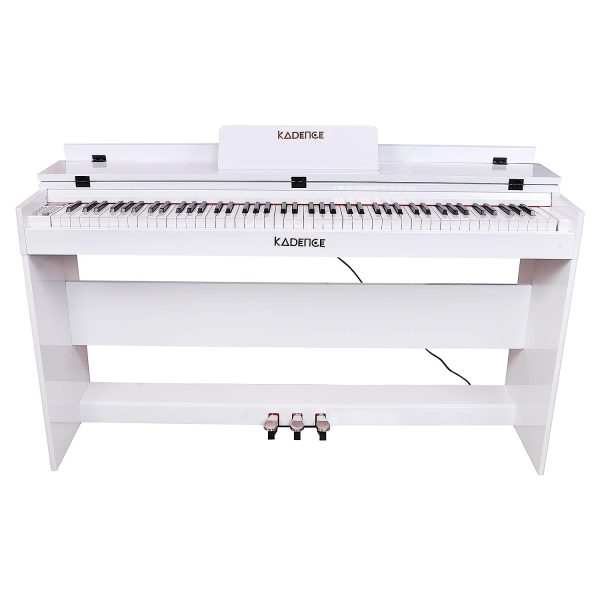What is a Digital Piano anyway?
Digital piano is an electronic musical instrument that produces sounds by simulating the sound of a traditional acoustic piano. It is digitally enabled to store and replicate authentic piano sounds.
Though initially designed to serve as an alternative to the traditional acoustic piano, digital pianos today are capable of doing more than just that. They come with a myriad of features such as built-in metronomes, USB/MIDI terminals, and sound recording options to name a few.
Analyzing the Odds: Gambling Statistics in Canadian Casinos
Have you ever wondered about the fascinating world of gambling statistics in Canadian casinos? From the thrill of slot machines to the strategy of card games, the realm of casino gaming is a dynamic landscape where luck and skill intersect. In this article, we delve into the numbers behind the games, exploring the odds, probabilities, and trends that shape the Canadian gambling industry.
Join us as we unravel the mysteries of casino statistics, uncovering insights that shed light on the inner workings of this billion-dollar industry. From the impact of technology on gaming trends to the psychology behind player behavior, we will navigate through the data to reveal the secrets that casinos hold. Get ready to embark on a journey through the numbers, where every spin of the wheel and flip of the card tells a story of chance and calculation in the world of Canadian casinos.
Overview of Gambling Trends in Canadian Casinos
When it comes to gambling statistics in Canadian casinos, a variety of factors come into play. One key aspect is the odds of winning different games, which can vary significantly from one game to another. For example, slot machines are known for having lower odds compared to table games like blackjack or poker. Understanding these odds is crucial for players looking to maximize their chances of winning.
Additionally, the payout percentages of Canadian casinos play a significant role in analyzing gambling statistics. Payout percentages, also known as return to player (RTP), indicate the average amount of money returned to players over time. Casinos with higher RTP percentages tend to be more player-friendly, offering better odds for gamblers. This data is essential for players seeking to make informed decisions about where to gamble.
Moreover, the prevalence of problem gambling is another important statistic to consider in Canadian casinos. Research shows that a small percentage of players account for a large portion of gambling revenue, highlighting the potential risks associated with excessive gambling. Understanding the impact of problem gambling is crucial for both players and casino operators in promoting responsible gaming practices.
Overall, analyzing gambling statistics in Canadian casinos provides valuable insights into the industry’s dynamics and player behaviors. By considering factors such as odds, payout percentages, and problem gambling rates, players can make more informed decisions about their gambling activities. This data also serves as a tool for regulators and policymakers to ensure the responsible and sustainable growth of the gambling industry in Canada.
Impact of Gambling on Canadian Society
When it comes to gambling statistics in Canadian casinos, a recent report sheds light on the odds players face. The report delves into various aspects of gambling, including popular games, player demographics, and overall revenue generated by casinos across the country. By analyzing these statistics, researchers can gain valuable insights into the gambling industry in Canada.
One key finding from the report is the prevalence of slot machines in Canadian casinos. These games are not only popular among players but also contribute significantly to the total revenue of casinos. The report highlights the high demand for slot machines and their impact on the gambling landscape in Canada.
In addition to slot machines, the report also examines the statistics related to table games such as blackjack, roulette, and poker. These traditional casino games continue to attract a diverse range of players, contributing to the overall entertainment experience offered by Canadian casinos. The report provides detailed insights into the popularity and revenue generated by these table games.
Overall, the report on gambling statistics in Canadian casinos offers a comprehensive overview of the industry. By analyzing the odds, game preferences, and revenue figures, researchers and industry experts can better understand the dynamics of the Canadian gambling market and make informed decisions to enhance the gaming experience for players across the country.
Statistical Analysis of Casino Games and Payouts
When it comes to gambling statistics in Canadian casinos, a variety of data points are analyzed to understand the odds players face. One key aspect that is closely examined is the return to player (RTP) percentage for different games. RTP indicates the percentage of all money wagered on a game that is paid back to players over time. This statistic is crucial for players as it gives them an idea of how likely they are to win in a particular game.
Another important statistic in the realm of gambling is the house edge, which represents the advantage the casino has over players in a specific game. The house edge varies across games, with some offering better odds for players than others. Understanding the house edge is essential for players looking to maximize their chances of winning in Canadian casinos. By analyzing this statistic, players can make more informed decisions about where to place their bets.
In addition to RTP and house edge, the frequency of wins and the size of payouts are also key statistics that are scrutinized in Canadian casinos. These metrics help paint a comprehensive picture of the gambling landscape, showing players how often they can expect to win and how much they can potentially win when playing different games. By delving into these statistics, players can develop strategies to enhance their overall gaming experience and potentially increase their winnings.
Overall, analyzing gambling statistics in Canadian casinos provides valuable insights for both players and casino operators. Players can use this data to make informed decisions about their gaming choices, while casinos can utilize these statistics to fine-tune their offerings and attract more patrons. By understanding key metrics such as RTP, house edge, win frequency, and payout sizes, stakeholders in the Canadian gambling industry can work towards creating a more engaging and rewarding gaming environment for all involved.
Responsible Gambling Initiatives in Canadian Casinos
When it comes to gambling statistics in Canadian casinos, there is a wealth of data available to analyze the odds of winning. One key aspect to consider is the payout percentage, which represents the amount of money wagered that is returned to players as winnings. Canadian casinos typically have payout percentages ranging from 90% to 98%, with higher percentages indicating better odds for players.
Another important statistic to examine is the house edge, which is the advantage the casino has over players in any given game. Games like slots and roulette tend to have higher house edges compared to games like blackjack or poker. Understanding the house edge can help players make informed decisions about where to place their bets to maximize their chances of winning.
Furthermore, analyzing the frequency of wins and losses can provide insights into the volatility of different casino games. Some games may offer smaller, more frequent wins, while others may have larger but less frequent payouts. By studying these patterns, players can tailor their strategies to align with their risk tolerance and desired level of excitement.
Overall, delving into gambling statistics in Canadian casinos can empower players to make strategic decisions that enhance their gaming experience. By leveraging data on payout percentages, house edges, and win frequencies, players can approach casino games with a better understanding of the odds, ultimately increasing their chances of walking away with a win.
Overall, delving into the world of gambling statistics in Canadian casinos reveals a fascinating landscape of numbers and probabilities. From the odds of winning at different games to the revenue generated by the industry, the data paints a vivid picture of the gambling scene in Canada. By understanding these statistics, both players and industry professionals can make more informed decisions. As the industry continues to evolve and adapt to changing trends, keeping an eye on the numbers will be crucial for staying ahead in this dynamic and exciting sector.
Reasons that make the digital piano the best piano for beginners:
- Versatility: Digital pianos can open up a world of possibilities for beginner players. They can be used in a variety of settings, including live performances, in the studio, as well as for personal practice. Therefore, they do not limit beginners who tend to be unsure of their style and future wants.
- They are feature-rich and allow more room for learning and creativity: Digital pianos have multiple features and practice tools that the traditional acoustic piano lacks, they also possess functions and effects that allow a beginner to experiment and discover their style.
- Regret minimisation: It is a safe bet to pick a digital piano over a traditional acoustic piano. You can do everything on an electric piano that you can do on a traditional piano but it is not true the other way around. Electric pianos not only present you with an acoustic piano-like sound but also with multiple other features that make sure you never regret your decision of purchasing one.
- Easy on the pocket: Digital pianos offer great value for money. They are far less expensive than acoustic pianos, which makes them a great choice for beginners looking to start out without having to spend a fortune.
- Portability: Digital pianos are easier to move around than their heavier counterpart, the acoustic piano. For a beginner, this would mean lesser hassle in transporting the instrument when faced with such a situation; this way they can relocate without having to worry about missing their piano lessons.
- Low maintenance: As a beginner, you would not want to trouble yourself with maintenance reminders, your sole objective should be to get better at playing the piano rather than worrying about maintaining it.
A digital/electric piano does not require the same level of maintenance as an acoustic piano. It does not need to be tuned, and there are no hammers or strings that need to be replaced- qualities that make the digital piano the best piano for beginners.
-
Product on sale
 Kadence 88 Heavy Weighted keys White Wooden Stand Digital Piano with Glossy Finish (DP03W)Original price was: ₹65,000.00.₹48,999.00Current price is: ₹48,999.00.
Kadence 88 Heavy Weighted keys White Wooden Stand Digital Piano with Glossy Finish (DP03W)Original price was: ₹65,000.00.₹48,999.00Current price is: ₹48,999.00. -
Product on sale
 Brown Wooden Stand Digital Piano – 88 Semi Weighted keysOriginal price was: ₹46,773.00.₹27,999.00Current price is: ₹27,999.00.
Brown Wooden Stand Digital Piano – 88 Semi Weighted keysOriginal price was: ₹46,773.00.₹27,999.00Current price is: ₹27,999.00. -
Product on sale
 Black Wooden Stand Digital Piano – 88 Semi weighted keys (DP02)Original price was: ₹46,773.00.₹28,999.00Current price is: ₹28,999.00.
Black Wooden Stand Digital Piano – 88 Semi weighted keys (DP02)Original price was: ₹46,773.00.₹28,999.00Current price is: ₹28,999.00.




